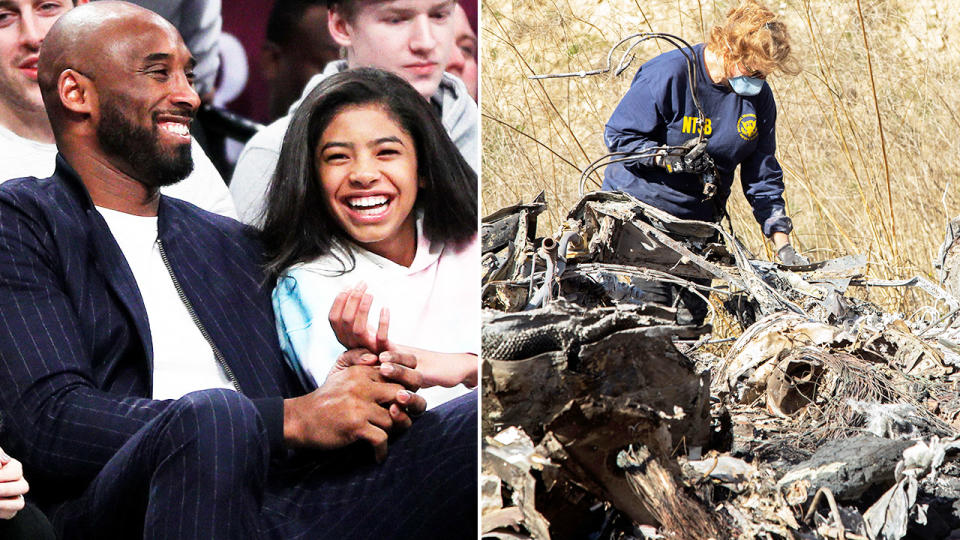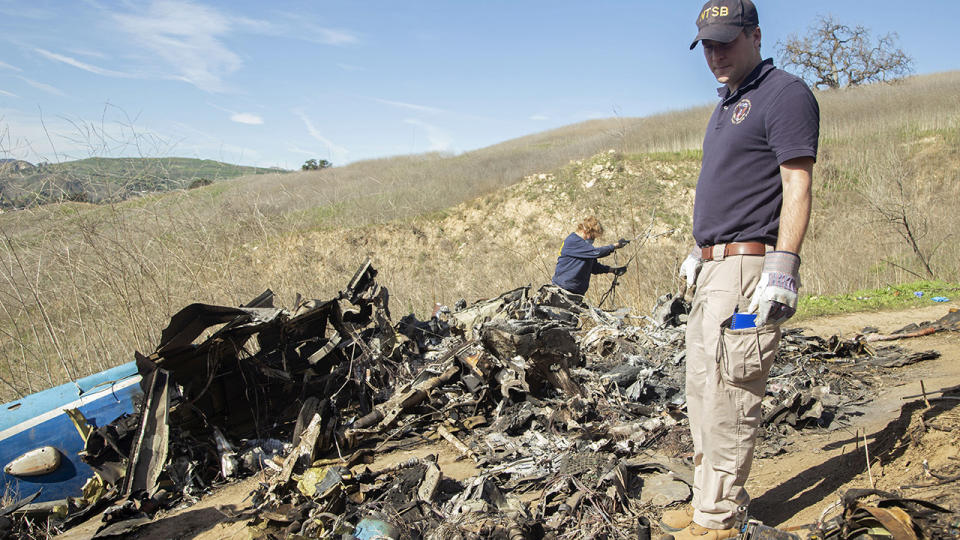'Could have helped': Startling new details about helicopter carrying Kobe Bryant
The helicopter carrying Kobe Bryant did not have a recommended warning system to alert the pilot he was too close to the ground but it is not clear if it would have averted the crash, investigators say.
At issue is what is known as a Terrain Awareness and Warning System, or TAWS, which would have sounded an alarm if the aircraft was in danger.
HAUNTING: Footage of Kobe Bryant's doomed helicopter emerges
‘THEY HAD A DEAL’: Kobe's devastating pact with wife before death
While the cause of the wreck that killed the former NBA superstar, his 13-year-old daughter and the seven others aboard on Sunday is still under investigation, the National Transportation Safety Board may again recommend helicopters with six or more passenger seats be required to have such equipment.
The pilot in Sunday's crash, Ara Zobayan, had been climbing out of the clouds when the chartered aircraft banked left and began a sudden 1200ft descent that lasted nearly a minute, investigators said on Tuesday.
It slammed into a fog-shrouded hillside, scattering debris more than 500ft.

"This is a pretty steep descent at high speed," the NTSB's Jennifer Homendy said.
"We know that this was a high-energy impact crash."
The last of the victims' bodies were recovered on Tuesday and coroner's officials said the remains of Bryant, Mr Zobayan and two other passengers have been identified using fingerprints.
The NTSB recommended the Federal Aviation Administration require TAWS after a similar helicopter, a Sikorsky S-76A carrying workers to an offshore drilling ship, crashed in the Gulf of Mexico near Galveston, Texas, killing all 10 people aboard in 2004.
Ten years later, the FAA mandated such systems on air ambulances but not other helicopters.
FAA officials had questioned the value of such technology on helicopters, which tend to fly close to buildings and the ground and could trigger too many false alarms that might distract the pilot.
"Certainly, TAWS could have helped to provide information to the pilot on what terrain the pilot was flying in," Ms Homendy said of the helicopter that was carrying Bryant.

Investigation still underway
At the same time, she said it was too soon to say whether the pilot had control of the helicopter as it plummeted.
Bill English, investigator in charge of the NTSB's Major Investigations Division, said it was not clear yet whether "TAWS and this scenario are related to each other".
At the time of the crash, Bryant was on his way to a youth basketball basketball tournament in which his daughter Gianna was playing.
Two of her teammates also were on the helicopter with parents.
Coroner's officials confirmed the remains of Bryant, 41; Mr Zobayan; John Altobelli, 56, and Sarah Chester, 45.
Relatives and acquaintances have identified five other victims as Gianna Bryant; Ms Chester's 13-year-old daughter, Payton; Mr Altobelli's wife, Keri, and daughter, Alyssa, and Christina Mauser, who helped Bryant coach his daughter's team.
